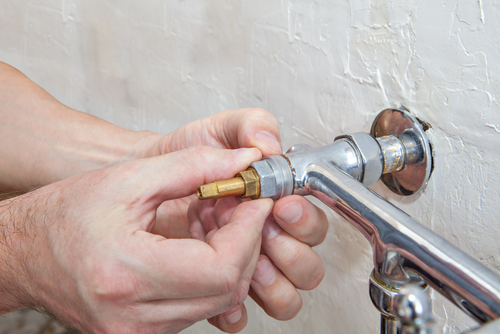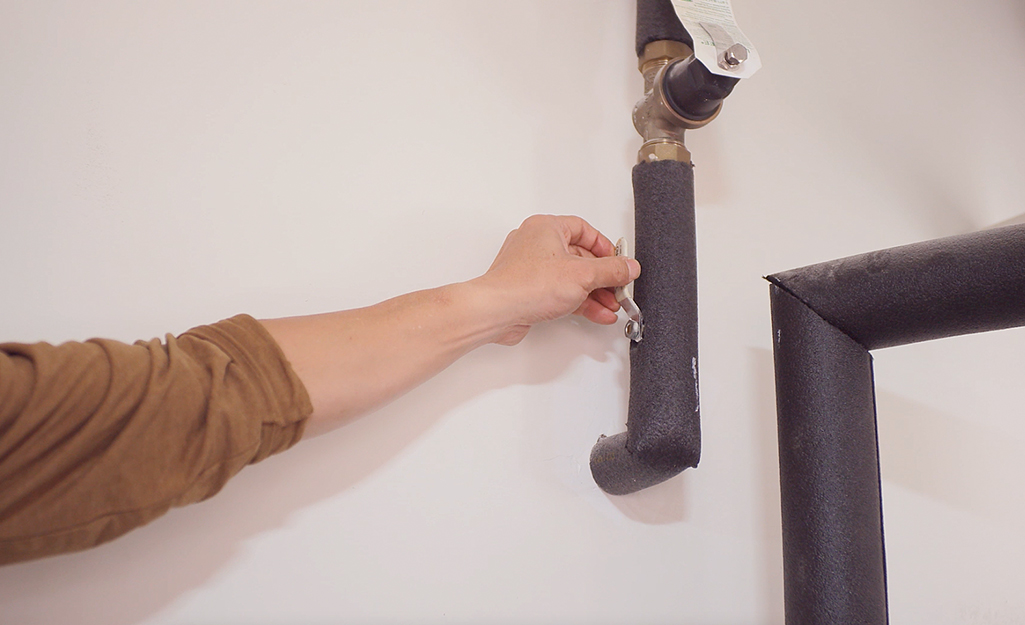They are making a few great points on the subject of Why Is It Important To Fix Your Leaking Tap/Faucet? as a whole in the content which follows.

Leaking faucets may look like a minor trouble, but their impact goes beyond just the inconvenience of the audio. From wasting water to incurring unneeded economic costs and wellness threats, neglecting a leaking faucet can cause various effects. In this post, we'll look into why it's vital to address this usual family problem without delay and effectively.
Wastefulness of Water
Ecological Influence
Leaking faucets add significantly to water waste. According to the Epa (EPA), a single faucet dripping at one drip per second can waste more than 3,000 gallons of water annually. This not only stress water sources but likewise influences environments and wildlife depending on them.
Financial Costs
Enhanced Water Expenses
Past the ecological influence, leaking faucets can inflate water costs considerably. The collected wastefulness with time translates right into higher utility costs, which can have been avoided with timely repair work.
Potential Property Damage
In addition, long term dripping can cause harm to components and surfaces surrounding the tap. Water buildup can cause discoloration, deterioration, and also structural concerns if left unattended, resulting in added repair service costs.
Health and wellness Concerns
Mold And Mildew and Mildew Growth
The consistent existence of dampness from a leaking faucet produces an ideal setting for mold and mildew and mildew development. These fungi not just jeopardize indoor air top quality but also present health dangers, specifically for individuals with respiratory system conditions or allergies.
Waterborne Diseases
Stationary water in trickling taps can end up being a breeding place for microorganisms and various other pathogens, raising the danger of waterborne conditions. Pollutants such as Legionella germs prosper in stationary water, potentially resulting in severe illnesses when ingested or breathed in.
DIY vs. Professional Repair
Pros and Cons of DIY Repair
While some might try to deal with a trickling tap themselves, DIY repair work come with their own collection of difficulties. Without correct expertise and tools, do it yourself efforts can worsen the issue or lead to insufficient repair services, lengthening the problem.
Advantages of Employing a Professional Plumber
Working with an expert plumber guarantees that the underlying root cause of the trickling faucet is dealt with effectively. Plumbers have the expertise and tools to diagnose and fix tap issues efficiently, saving time and lessening the danger of additional damages.
Step-by-Step Guide to Fixing a Dripping Tap
Tools Required
Prior to attempting to fix a leaking faucet, collect the essential tools, consisting of a flexible wrench, screwdrivers, substitute components (such as washing machines or cartridges), and plumber's tape.
Typical Faucet Issues and Their Solutions
Determine the type of faucet and the details issue creating the drip. Common issues consist of damaged washers, rusty valve seats, or malfunctioning O-rings. Refer to manufacturer guidelines or online tutorials for detailed guidance on repairs.
Preventive Measures
Regular Maintenance Tips
To stop trickling faucets, carry out routine upkeep such as cleansing aerators, inspecting for leaks, and changing worn-out components quickly. Additionally, think about setting up water-saving gadgets or upgrading to more efficient fixtures.
Significance of Prompt Services
Dealing with trickling faucets as soon as they're noticed protects against additional water wastage and possible damage, ultimately conserving both water and money over time.
Effect On Home Worth
Understanding of Well-Maintained Home
Maintaining a building in good condition, consisting of attending to maintenance concerns like dripping taps, improves its perceived worth and charm among potential customers or lessees.
Influence on Resale Value
Qualities with well-kept plumbing components, including faucets, command higher resale values in the property market. Addressing trickling faucets can add to a positive impression during property evaluations and arrangements.
Environmental Responsibility
Specific Contribution to Conservation
Taking duty for fixing leaking taps lines up with more comprehensive initiatives toward water preservation and ecological sustainability. Every person's activities jointly make a substantial effect on preserving priceless sources.
Lasting Living Practices
By prioritizing punctual repairs and adopting water-saving behaviors, people add to sustainable living methods that benefit both existing and future generations.
Conclusion
Resolving a dripping faucet exceeds plain ease; it's an important step towards preserving water, reducing economic costs, and securing health and wellness and building. Whether via do it yourself repair work or expert aid, doing something about it to repair trickling faucets is a little yet impactful method to advertise accountable stewardship of sources and contribute to a much healthier, a lot more sustainable future.
How to Fix a Leaky Faucet: Step-by-Step Repair Guide
A leaky faucet may seem like a simple annoyance, but if it's not fixed promptly, that leak could cost hundreds to potentially thousands. From water damage to mold, mildew, and high water bills, even a tiny leak can be catastrophic if left unattended. Damage like this can even affect the overall value of your home, so it's important to take the right approach for leaky faucet repair. You may need the help of a plumber in some cases, but we've got a few tips you can try on how to fix a leaky faucet before calling the pros.
Four Faucet Types
When you're learning how to fix a leaky faucet, the first step is knowing what kind of faucet you're working with! There are four common types.
Cartridge Faucets
Cartridge faucets come in one- or two-handled varieties. In one-handled cartridge faucets, hot and cold water combines in a single cartridge. In the two-handled versions, hot and cold water are controlled separately and mixed in the faucet.
Ball Faucets
Ball faucets have a single lever you push up and down to adjust the pressure and rotate to change the temperature. A slotted metal ball controls the amount of water allowed into the spout.
Compression Washer Faucets
They're the oldest type of faucet, but they're still used in many homes — especially older ones. Compression faucets have two separate handles that, when turned, raise or lower the washer that seals a water valve. This valve stops water from flowing through the faucet when it is turned off.
Disc Faucets
Disc faucets rarely need to be repaired due to their maintenance-free design. The water flow is controlled by two discs — the upper one raises and lowers against a fixed lower disc, creating a watertight seal. If your disc faucet starts leaking, you may need to replace the seals or clean residue buildup from the inlets.
Fixing a Leaky Faucet
Step 1: Turn Off the Water
Whether you're learning how to fix a leaky bathtub faucet or how to fix a leaky kitchen faucet, always turn off the water supply to your working area when you're fixing a leak. The last thing you want is a flood added to your list of things to fix.
Look for the shutoff valves below your sink or around the tub and turn them clockwise to stop the water flow. If your faucet doesn't have shutoff valves, you may need to turn off the water for the whole house. Check to make sure it's off by turning the faucet on. If nothing comes out, you're ready to start the repair.
Step 2: Take Apart the Faucet
How you disassemble your faucet depends on the type of fixture you have. You can use a flathead screwdriver to remove the caps on top of the handle or handles for cartridge and compression faucets. Inside, you should see handle screws. Unscrew these with a screwdriver to remove the handle.
Disc- and ball-style faucets will typically have an inlet screw near the handle, and removing that will reveal the interior of the faucet.
Detach the Valve Stem
For cartridge- and compression-style faucets, you'll see the inner valve stem or cartridge once you remove the faucet handles. If you have a compression faucet, unscrew the brass valve stem. If you have a cartridge faucet, pull out the cartridge. If your cartridge has been in place for a while, it may require some tools or extra force to remove it due to mineral deposits.
Examine and Replace Parts
Once you've removed the parts, check them out to confirm what needs to be replaced. You may see corroded rubber washers, O-rings, stems, or cartridges. On a ball-style faucet, check the seats and springs for damage.
If you need to repair a leaky disc faucet, check the inlet and seals on the lower disc.
Once you determine what parts must be replaced, visit your local hardware store. Bring the damaged parts with you to ensure you can purchase the correct components to replace them.
Clean Valves and Faucet Cavity
If you've removed a stem or cartridge, you may notice mineral buildup in the faucet's threads. Use white vinegar to clean the valve seat by soaking it for a few minutes, then scrub it away with a soft toothbrush and rinse with warm water. You can also clean the interior of the faucet in the same way.
Reassemble the Faucet
Once your faucet is cleaned and the required parts have been replaced, it's time to reassemble it. Put the pieces back together and slowly turn the water supply back on. Doing this slowly is crucial because too much initial water pressure can damage the new hardware you've just installed.
https://homewarranty.firstam.com/blog/how-to-fix-leaky-faucet

Hopefully you enjoyed reading our section on Why It's Important to Fix Leaky Faucets. Thanks a lot for taking time to read through our piece. Sharing is caring. Helping others is fun. I treasure your readership.